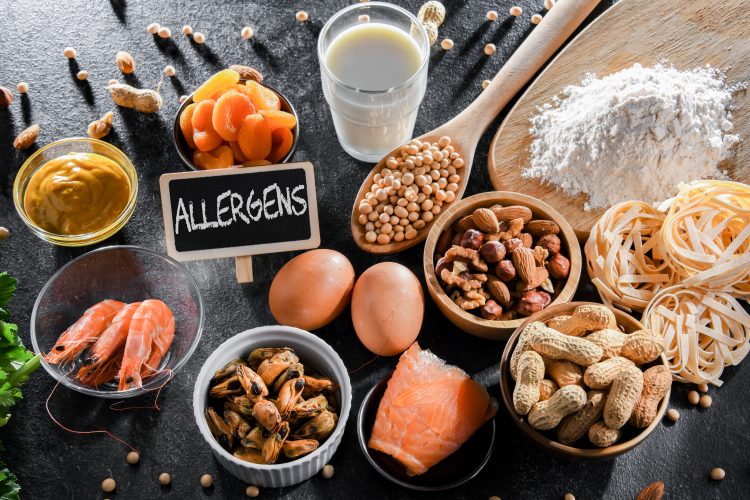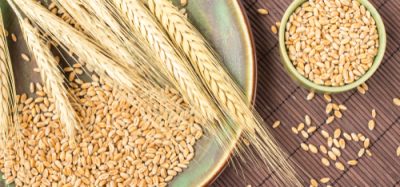Scientists identify “first step” in allergic reactions
- Like
- Digg
- Del
- Tumblr
- VKontakte
- Buffer
- Love This
- Odnoklassniki
- Meneame
- Blogger
- Amazon
- Yahoo Mail
- Gmail
- AOL
- Newsvine
- HackerNews
- Evernote
- MySpace
- Mail.ru
- Viadeo
- Line
- Comments
- Yummly
- SMS
- Viber
- Telegram
- Subscribe
- Skype
- Facebook Messenger
- Kakao
- LiveJournal
- Yammer
- Edgar
- Fintel
- Mix
- Instapaper
- Copy Link
Posted: 5 June 2024 | Grace Galler | No comments yet
A new study by Duke-NUS hopes to support millions living with severe food allergies through strategies to prevent life-threatening reactions.


A team of researchers at Duke-NUS Medical School have identified a method to detect “how the first domino falls” after a person encounters an allergen, such as peanuts, shellfish, pollen or dust mites.
They claim that the study, published in Nature Immunology, could herald the development of drugs to prevent these severe reactions.
Prior research had confirmed that when mast cells, a type of immune cell, mistake a harmless substance, such as peanuts or dust mites, as a threat, they release an immediate first wave of bioactive chemicals against the perceived threat. When mast cells, which reside under the skin, around blood vessels and in the linings of the airways and the gastrointestinal tract, simultaneously release their pre-stored load of bioactive chemicals into the blood, instant and systemic shock can result, which can be lethal without quick intervention.
According to End Allergies Together, around 220 people across the world live with food allergies. As a way to support those living with food hypersensitivity through scientific research, the team at Duke-NUS has now discovered is that the release of particulate mast cell granules, which contain these bioactive chemicals, is controlled by two members of an intracellular multiprotein complex called inflammasome.
The latest update offers significant scientific developments as, until now, these inflammasome proteins were only known to spontaneously assemble within immune cells to secrete soluble chemicals to alert other parts of the immune system upon detection of an infection.
“We discovered that the inflammasome components played a surprisingly crucial role in transporting particulate mast cell granules which are typically packed in the cell centre to the cell surface where they are released. This surprising discovery gives us a precise target where we can intervene to prevent the cascade of events initiated in mast cells that leads to anaphylactic shock,” said Professor Soman Abraham, Grace Kerby Distinguished Professor of Pathology at Duke University, and research lead.
While observing mice whose mast cells lacked either of the two inflammasome proteins, NLRP3 or ASC, Professor Abraham and his team found that when these animals were exposed to allergens, they failed to experience anaphylactic shock. However, anaphylactic shock was observed when mast cell NLRP3 and ASC proteins assembled and bound to individual intracellular granules, forming a complex the researchers call granulosome, facilitating the granules’ movement along tracks formed by the cytoskeleton within the mast cell.
Commenting on the findings of the study, Dr Pradeep Bist, Co-First Author of the paper and a Principal Research Scientist with Duke-NUS’ Emerging Infectious Diseases Programme, said:“Upon mast cell activation, we observed rapid granule movement on dynamic tracks known as microtubules to the cell membrane, where these granules were promptly released from the cell. However, in mast cells deficient in either NLRP3 or ASC proteins, we found no sign of intracellular granule movement and none of these granules were released.”
Then, once having demonstrated the trafficking role of NLRP3 and ASC, the researchers considered to known inflammasome inhibitors to test whether they could prevent this event from taking place. Through the use of an inflammasome-blocking drug very similar to those undergoing clinical trials for chronic inflammatory diseases, called CY-09, they administered the therapy to mice before introducing an allergen. They found that in their preclinical model, they were able to effectively prevent anaphylactic shock with this drug.
“It was noteworthy that by employing a drug that specifically blocked inflammasome protein activity, we were able to selectively block the release of mast cells’ pre-stored chemicals without impacting other potentially beneficial activities of mast cells,” explained Dr Andrea Mencarelli, from the Shanghai Jiao Tong University School of Medicine’s Immune Therapy Institute, Shanghai China, and another Co-Author of the paper.
The team have researchers have noted that although their findings do not provide a cure, they believe it could offer people living with severe allergies a “new tool to prevent the onset of a potentially traumatic reaction”.
“I could see this bringing peace of mind to parents of children with severe food allergies when they encounter situations where they can’t be sure whether there’s an exposure risk. While we don’t want to deactivate this part of the immune system for prolonged periods, this could potentially provide short-term protection,” said Prof Abraham, whose team is now working on optimising the dosage and frequency of use of this drug to achieve the best protective effects against anaphylactic shock. After this, we hope to do the same for asthma and allergic skin reactions,” continued Tong.









